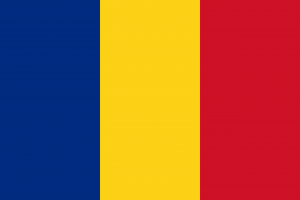Difference between revisions of "Language/Romanian/Culture/Social-Issues-and-Diversity"
m (Quick edit) |
m (Quick edit) |
||
| Line 2: | Line 2: | ||
{{Romanian-Page-Top}} | {{Romanian-Page-Top}} | ||
<div class="pg_page_title">Romanian | <div class="pg_page_title">[[Language/Romanian|Romanian]] → [[Language/Romanian/Culture|Culture]] → Social Issues and Diversity</div> | ||
__TOC__ | __TOC__ | ||
| Line 56: | Line 56: | ||
}} | }} | ||
| Line 76: | Line 76: | ||
{{Romanian-Page-Bottom}} | {{Romanian-Page-Bottom}} | ||
<span maj></span> <span gpt></span> <span model=gpt-3.5-turbo></span> | |||
Revision as of 20:08, 18 March 2023
As a Romanian language teacher with over 20 years of experience, I value the importance of integrating cultural information and interesting facts into my lessons. In this lesson, we will take a closer look at the social issues, diversity, and inclusion topics in Romanian society and culture. This lesson belongs to the "Complete 0 to A1 Romanian Course".
Social Issues and Diversity in Romanian Society
Romania has come a long way since the fall of the communist regime in 1989. The country has faced numerous challenges in the areas of human rights, social issues, and diversity. In terms of diversity, Romania is a multicultural society, where several ethnic groups and religions coexist.
A significant challenge for Romania is the treatment of the Roma community. The Roma community is the largest ethnic minority in Romania, comprising approximately 3% of the population. Unfortunately, their social and economic status remains low, and they frequently face discrimination in various forms, including access to education, employment, and healthcare.
Another critical social issue in Romania is domestic violence, which is a widespread problem that affects women, children, and vulnerable groups. The Romanian government has taken steps to combat domestic violence, including a new law in 2018 that criminalizes verbal, emotional, or economic abuse of family members.
Romania is also adopting measures to increase diversity and inclusion in the workplace. Several companies have launched diversity and inclusion programs to encourage employees from different backgrounds, ethnicities, and genders to participate in decision-making processes and have an equal voice in the workplace.
The country has made significant progress in creating a more inclusive society. The government has implemented policies that support persons with disabilities, such as the National Strategy for the Rights of Persons with Disabilities for the year 2016-2020.
However, there is still a long way to go to achieve true diversity, equality, and inclusion in Romania.
Romanian Sign Language
Romanian Sign Language (or LRS) is the sign language used in Romania by deaf people. It is similar to other European sign languages, such as British Sign Language and German Sign Language. Romanian Sign Language is recognized as an official language in Romania, and the government has taken measures to promote the language and the rights of the deaf community.
Here are some common Romanian Sign Language phrases:
| Romanian Sign Language | English Translation |
|---|---|
| Bună dimineața! | Good morning! |
| Poți să vorbești mai încet, te rog? | Can you speak slower, please? |
| Te rog din suflet. | Please. |
| Mulțumesc! | Thank you! |
| Vrei să mergem să mâncăm ceva? | Do you want to grab something to eat? |
LGBTQ+ Rights in Romania
Romania is still a conservative country in terms of LGBTQ+ rights. Marriage and the adoption of children by same-sex couples are not yet legally recognized, and homophobic attitudes and discrimination against LGBTQ+ individuals are still prevalent. However, there has been some progress, such as the introduction of anti-discrimination laws and the emergence of LGBTQ+ organizations and pride parades in major cities.
Sources
Related Lessons
- Romanian Folklore and Music
- Romanian Language and Dialects
- Romanian Diaspora and Migration
- Romanian and European Identities
- History of Romania
- Religion and Folk Beliefs
- Cuisine and Customs
- Media and Entertainment
- Moldova Timeline
